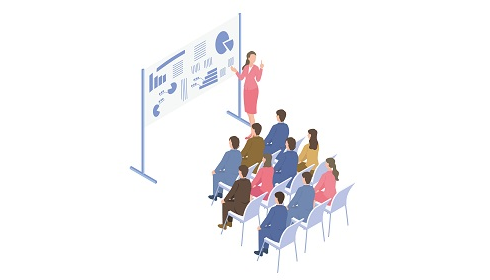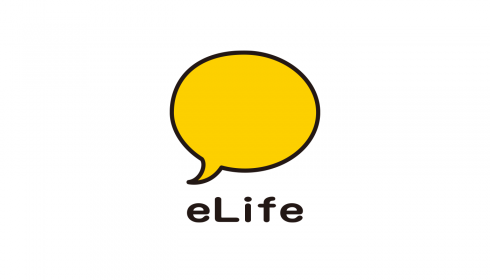Supporters are the key to the corporate community - a basic concept of eLife Inc.: What is "CSA"?
Until now, there have been cases of clients supported by eLifebeing featured in the media, but there have been few opportunities for us, eLife, to personally present our company's history and the ideas we value.
In order to help you understand eLife a little better, our CEO, Seiichiro Fujiwara, will present the basic concept of our business in a lecture titled "The Basic Concept of eLife: What is CSA? to provide you with the basic concept of our business.
Supporters hold the key to the corporate community
eLife Inc. is a marketing support company celebrating its 22nd year in business this year. Recently, we have been asked by an increasing number of our clients to help them create online communities for their corporate brands.
What I call an online community is a place where fans with similar interests and hobbies gather. The goal is to increase interest in the company and its products and to expand the circle of fans through continuous, interactive communication. It is also commonly referred to as fan marketing.
In this issue, I would like to introduce the CSA model, which I base my thinking on when creating these online communities.
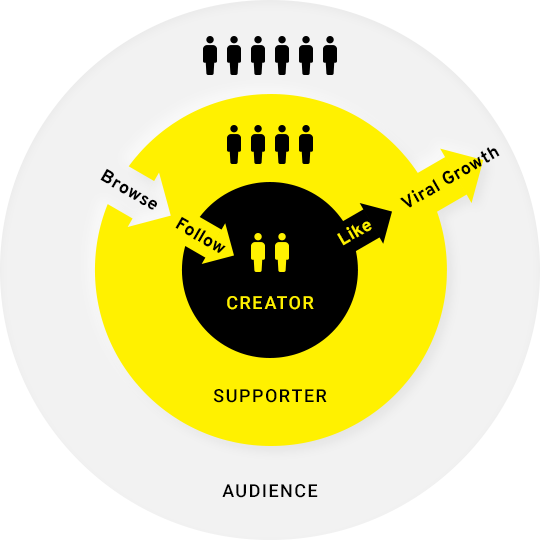
As a way of thinking about content creation - CSA - create creators as the axis of diffusion and build a three-tier structure of Creator, Supporter, and Audience.
CSA The model calls for the community to be
(1) Creators who create content
(2) Supporters who support the creators from the periphery
(3) The audience who enjoys watching from the outside
The term " CSA" was coined by combining the initial letters of Creator, Supporter, and Audience.
It may seem surprising, but I believe that for a community to expand in a self-propelled manner, the key is not only the creators who create content from scratch, but also the supporters who support the creators' activities from the periphery.
Let's go step-by-step to explain why this is so.
What is happening at no-show sporting events
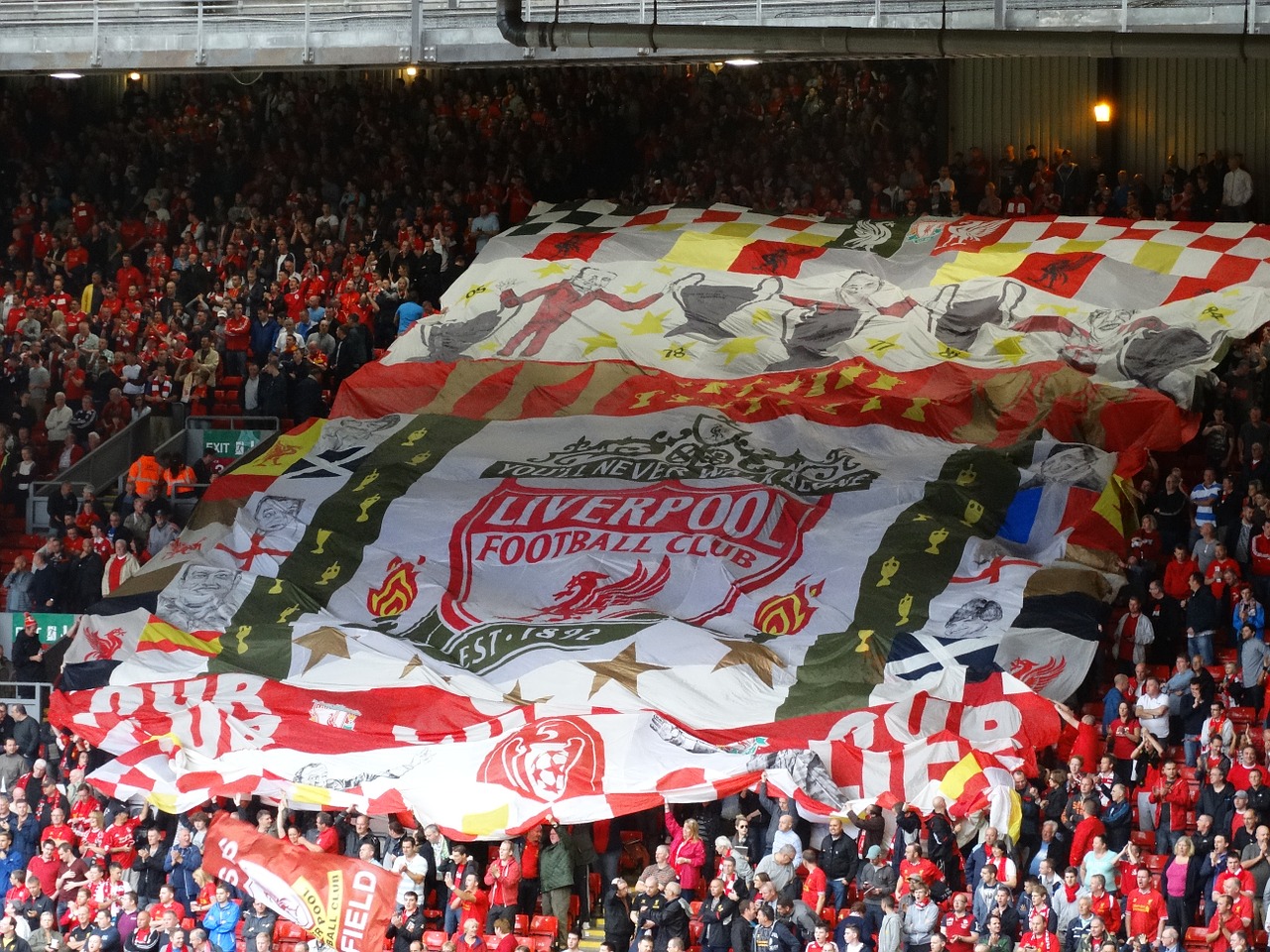
Supporters and audiences, both online and offline, are essential
CSA The concept of "the audience" can be easily understood by looking at a sporting event. In sports, creator = player, supporter = spectator in the stadium, and audience = person watching on TV, respectively.
However, due to the impact of the new coronavirus infection, this structure has been broken down at recent sporting events. For example, until the first half of this year, European soccer matches were held without an audience. Interestingly, the big clubs, which have always performed well each year, have not been as strong as in previous years, and the order of the standings has changed dramatically.
For example, Liverpool Football Club, based in Liverpool, England, was the European champion in the 2018-19 season and a strong club that also won the FIFA club world cup at the end of 19. However, in the 20-21 season, they showed the same fragility as if they were a different team and ended up without a crown.
People who are not familiar with soccer may not be able to grasp this, but it is truly an extraordinary situation for a big European club with overwhelming strength to collapse to this extent. I consider this a phenomenon caused by the absence of supporters, i.e., spectators who watch the games in the stadium.
Soccer league matches are usually played in a home-and-away format, with two teams playing each other twice, once in their respective hometowns. It is common knowledge among soccer enthusiasts that the home team has by far the better record.
However, since the same players are playing under the same rules, it would be strange to think that the home team has an advantage over the away team. From this, it seems obvious that the presence of a large crowd boosts the performance of the home team's players.
In other words, it is not only the players(creators) who are creating something. Rather, it is a collaborative effort between creators and supporters.
This can be felt even as an audience member watching the games on TV from here in Japan. A match without supporters is like watching a training session. It is boring and makes me sleepy in the middle of the game.
Even if we wanted to increase the number of creators, we can't

eLife an example of a fan community supported by the both are based on the csaconcept and have been active for a long time. ( Url is listed at the end of the text)
Let's get back to the corporate online community.
As a company, you want a lot of people to see the content posted on your owned media and thereby increase mindshare about your brand and products. With this in mind, that is why they set up communities.
This is where I think there is a big misunderstanding. Many companies think that the creators are the key to the community. They place a KPI on how many people become creators and create content, and they work to raise that value as much as possible.
In other words, the dichotomy of "those who create content" and "those who view it" is used to describe the community, and the more creators who create content, the more people will view it, and the community will expand.
However, trying to increase the number of creators is like trying to increase the number of players from 11 to 100 or 1,000, to use the soccer metaphor mentioned earlier. It is nonsense, isn't it?
It takes a lot of effort to post attractive content. No matter how much we try to work on it, people usually don't want to do it because it is too much work. In my opinion, the number of creators who create content itself only needs to be a few dozen in a single community (depending on the size of the community you envision, of course).
As mentioned at the beginning of this article, the actual community is not a two-layered structure of creators and audience, but a three-layered structure with supporters in between. It is not the creators themselves, but the number of supporters around them that is important. The more supporters we have and the more we encourage creators, the more good content we will have in the community. This will eventually lead to an increase in the audience that comes to the site in search of quality content.
To return again to the soccer analogy, there are always 11 players. However, if the stadium is filled to capacity and each and every supporter is extremely enthusiastic, that pressure will bring out the divine play of the players, and the audience will become enthusiastic as well, further expanding the circle. When such a three-layered structure is realized, the corporate community will be self-sustaining and grow in a snowballing fashion.
If the KPI is to increase the number of creators (i.e., increase the number of posts), it is easy to take superficial measures such as give them points for each post. If we do this, the number of boring posts for the sake of points will increase, and the quality of the content will decline.
If the quality of the content drops, no one will visit that media. Instead, it will result in the audience leaving.
Community building is the "origin" of eLife Inc.
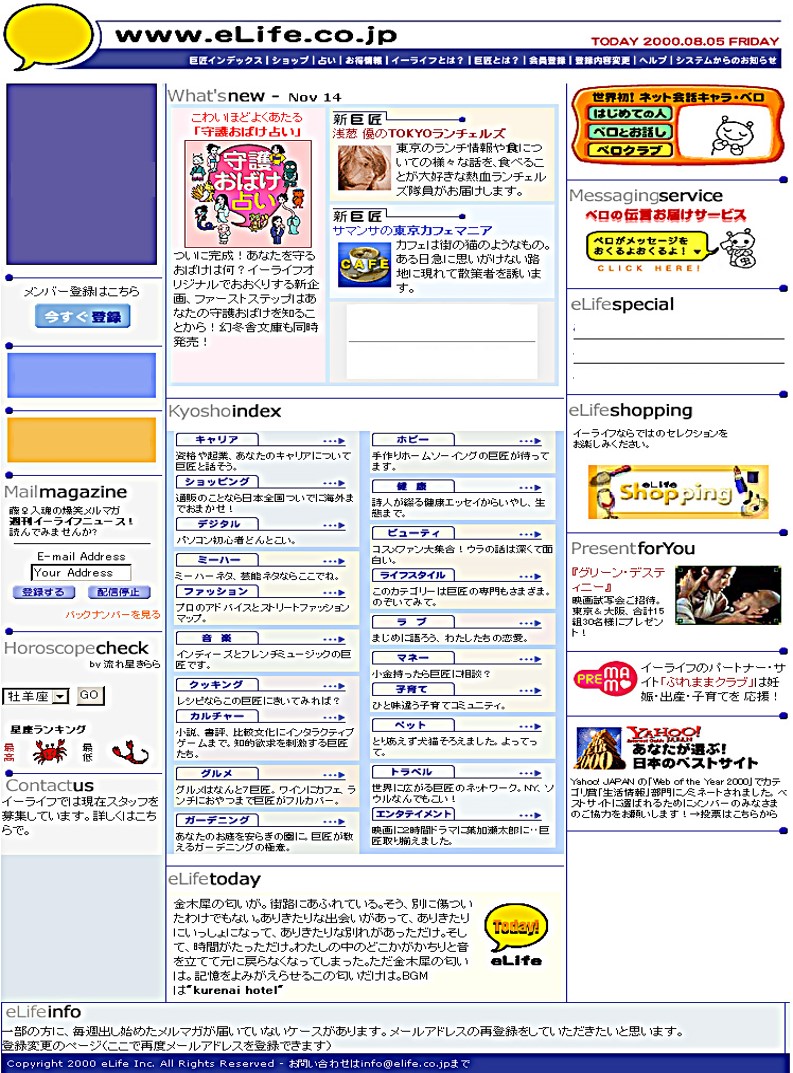
Launched in 2000, the master site of the eLife domain is a prototypical community site
In fact, eLife Inc. has been involved in community building since its inception 20 years ago. You might say that community building is the origin of eLife Inc.
When we founded eLife Inc. in 1999, the Internet was still in its infancy. My focus was on people who had their own personal hobby websites. Their self-made sites were created using "Home Page Builder" and other software and, from today's perspective, were quite simple. However, each of them had their own theme and were sending out great content.
For example, a person calling himself the "Qualification King" ran a page introducing the contents of the nearly 100 qualifications he had obtained and how to obtain them. Or a nursery school teacher from the Tohoku region would provide information on childcare, while a gardening expert would provide maniacal information on gardening, and so on, each person was demonstrating his or her strength in his or her own genre.
And each of them apparently had a fan base that visited their pages daily. I encouraged the operators of these sites(we called them "maestros") to create what we now call a community.
Since this is a community, we will naturally continue to send out content through the site as before, but we will also set up a bulletin board of sorts to allow interaction with fans. This was my proposal. I went all over Japan, from Hokkaido to Kyushu, and persuaded each and every one of them to create a website for their masters, a community gathering under the domain name elife.co.jp. That's how this company, eLife Inc., got started.
What was interesting was that what was actually happening in the community was not a one-way transmission from the masters. The fans would ask the masters for more contents, and in some cases, they would even say, I tried to do something like this myself.
Fans, or supporters as we call them nowadays, were upgrading the activities of the maestros, and the interactions themselves were becoming interesting content.
Therefore, I have been aware of the importance of supporters in creating a self-driven community since that time. Since that time, I have also consistently held the view that "people themselves are content and media."
Incidentally, we initially thought of turning this into a business through an advertising model, but then the Internet bubble burst and advertising prices plummeted, forcing us to change our business model. Looking back, I think we did the right thing. The way we did it and the timing may have been a bit wrong.
Anyway, that was our starting point. Actively applying it to corporate marketing activities is what we are working on now, and it is the basis of CSA.
~Examples of illustrations in the text~
Angel Plus (Morinaga&Co., Ltd.)
Community & KAGOME (KAGOME CO.,LTD.)
IDEA PARK (Ryohin Keikaku Co.,Ltd.)
Oishiine!! ( Maruha Nichiro Corporation)
JAL's travel community trico (Japan Airlines Co., Ltd.)
Kewpie Community Ohanashi Dining (LA ViDA) (Kewpie Corporation)


